Is the Trailer for 'The Shining' the Actual Film?
by Jane Hu
Stanley Kubrick was, to put it mildly, a meticulous director. On the set of The Shining, he drove poor Shelley Duvall mad. The famous baseball-bat scene was recorded an infamous 127 times. That striking poster of The Shining? Kubrick had Saul Bass draw over 300 versions of it. The director continued to tweak his film until its US opening, May 23, 1980 and even into its initial screenings; when he decided to cut the final hospital scene, Kubrick made bike couriers ride from theater to theater in order to personally remove the sequence. Kubrick’s artistic compulsions were a double-edged sword. Not even considering the immaculate texture of his films, Kubrick’s trailers are independent works of art in and of themselves.
Which leads to at least one question: why don’t people very often make artful trailers anymore?
The entire trailer of The Shining comprises of one continuous shot of the Overlook Hotel elevator, from which a flood of blood rushes forth to engulf both the lobby, the furniture and, presumably, the audience too. And, yes, Tony Burton recalls it went something like this:
“I don’t know how many times they shot the blood in the elevator. Somebody told me they had been shooting that ever since the shoot first started the year before. They shot it three times while I was there. About every ten days they would shoot it again and Stanley would say, ‘It doesn’t look like blood’ and they would say, ‘Well, is it the texture? Is it the color?’ It would take them like nine days to set the shot up and then they would come back, the door would open, it would come out and Stanley would say, ‘It doesn’t look like blood.’ But finally they got it.”
Throughout the trailer, a list of credits scrolls up the page as what is surely Penderecki swells louder and louder. “The Shining / Directed by Stanley Kubrick” occurs twice, bracketing the names of the two lead actors (Nicholson and Duvall) and Stephen King, whose novel inspired the film. By presenting the film’s title and director twice, Kubrick presents the trailer as a film-complete with opening and closing credits.
During his collaboration with Diane Johnson on The Shining’s script, Kubrick significantly stripped King’s novel down to its bare elements. On top of the significant cuts he imposed on the original text, he added many of his own twists in order to heighten the ghostly and occult atmosphere of the story. One of these additions was the elevator scene.
One critic wrote that “the flood of blood from the elevators has no reference to anything, looking like something put in for the trailer.”
They may be right there. Should it be viewed as the film itself?
Since trailers these days attack you with fast edits, sketch out the entire movie-except rearranged, of course-and present footage that won’t ever appear in said film, then who’s to say the 142 minute-long Shining isn’t just a long, drawn-out, and very, very artful trailer?
The elevator scene as seen in the trailer is cut and only periodically revealed in pieces throughout the film (trailer). So if we concentrate solely on this episode-dreamed up by Kubrick as apart from King’s novel-which is the more cohesive spectacle? The trailer (the film?)!
The Shining contains only fragments of the full elevator scene-they are like memories of the trailer.
Unfortunately, the circulation of trailers has altered since The Shining premiered. Someone I know first experienced Kubrick’s gushing elevator in the previews for a screening of Star Wars: Episode V — The Empire Strikes Back. He was ten and, since then, no preview has come close in impact. Kubrick’s high concept conceit evokes something and tells nothing. The trailer alone may not be a perfect movie, but it is the perfect definition of a sublime trailer.
Enjoy Your Resurrection Burger
Who’s hungry? “Cattle destined for the food chain in the U.S. are being cloned from dead animals. Technicians take samples from slaughtered cows to assess meat quality, and cells from the best are used to grow clones.” Mmm mmm mmm, cloned supercows from beyond the grave? I’ll take mine medium, please.
Lemme Tell Ya 'Bout White Kids
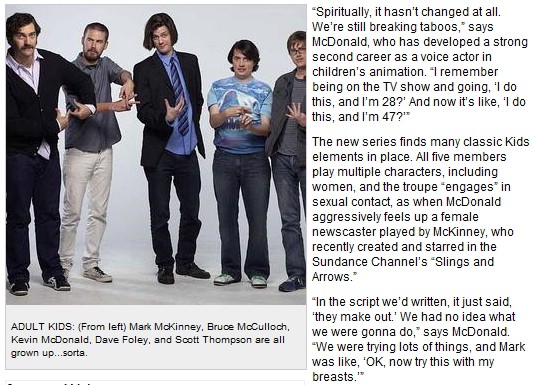
This weekend the New York Post had a piece on the return of the Kids in the Hall and their much-anticipated-at least by me-”Death Comes to Town” series. Unfortunately, the photo accompanying the article shows American sketch comedy troupe The Whitest Kids U’ Know rather than their Canadian ancestors. It’s an easy mistake to make, especially considering that both shows are affiliated with IFC, but still, in a time where the paper is under fire for confusing members of ethnic minorities with one another it is nice to know that they also apparently think that all white folks look alike too.
You Were Reading a Short Story; We Were Reading Another One!
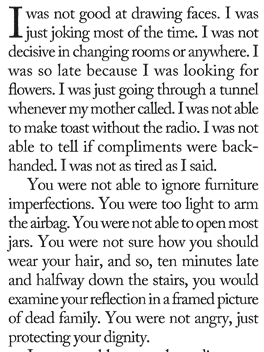
This story by Jessica Soffer from Granta last year, called “Beginning, End,” seems to me to be a better and more pleasingly economical take on the same conceit at Jonathan Safran Foer’s recent New Yorker story, “Here We Aren’t, So Quickly.” (Fun fact! Jessica Soffer recently received her MFA from Hunter, where Foer’s spouse, Nicole Krauss, is an instructor. So maybe they both learned from the best!)
Footnotes of Mad Men: The Two-Way Mirror and Social Anomie
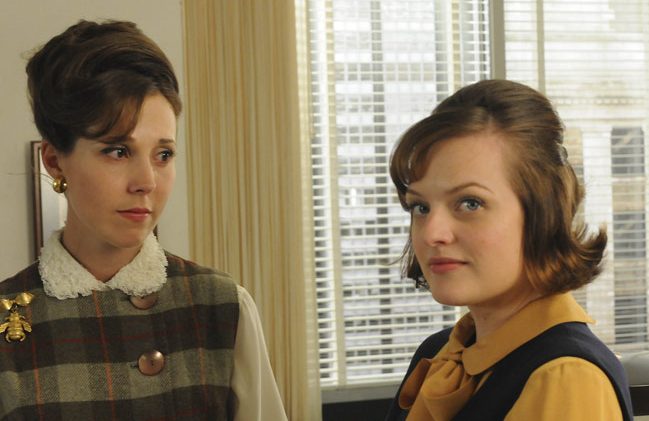
“This is the most underwhelmed I’ve felt on first viewing in quite some time,” begins the recaplet of last night’s “Mad Men” on Television Without Pity this morning. I find that astonishing. Maybe insane! Last night’s episode, the first to be directed by John “Roger Sterling” Slattery, was an incredibly nuanced, thoughtful and intricate construction. There are the mirror babies of Pete Campbell; the mirrored women of Don Draper and the mirrored sexual choices of Don Draper’s past and present secretaries; the mirrored salesmen of different firms, sitting across from each other at lunch. We haven’t seen such careful opposition and careful organization since the season two finale, in which we dealt with Betty Draper’s rather unwanted pregnancy (she sought to ‘deal with it’ by horseback riding) while Peggy at last told dreadful, rapey suck-up Pete Campbell that she’d had his baby.
â — Jacques Lacan, at the Fourteenth International Psychoanalytical Congress on August 3, 1936, first presented on the “mirror stage.”

While the idea of this enlightenment supposedly occurs before the age of 18 months, well, we’re not always all grown up, or not narcissists, are we?
“Mad Men” is built around moments of seeing oneself in other people, with understanding or with misidentification, resulting in horror. Picture Peggy blowing up at Don’s poor discarded sex-toy secretary, who views Peggy as a former Don cast-off. Peggy is revolted, somewhat unfairly-although, yes, this act of assumption strips Peggy of all her hard-won authority and competence. Not everyone sleeps with the boss, sister! Particularly when sleeping with the boss, contra Helen Gurley Brown, seems like the fast ticket to lack of success, not your own office.
â — While Don isn’t wrong entirely to berate our lady of the focus group (though he is doing it for the wrong reasons, his wounded male hubris), he’s wrong about their efficacy and use for good.
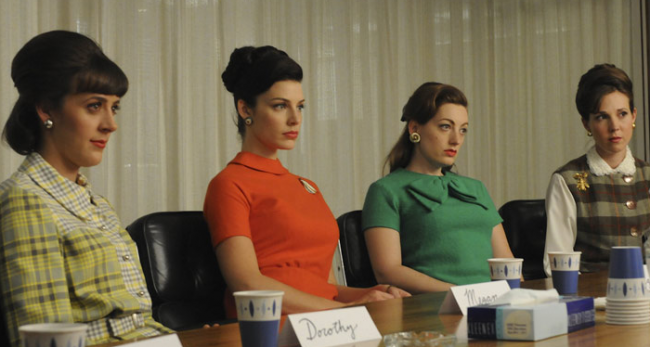
Robert K. Merton, one of the most influential sociologists of the 20th century, whose coinage of terms like ‘’self-fulfilling prophecy’’ and ‘’role models’’ filtered from his academic pursuits into everyday language, died yesterday….. His studies on an integrated community helped shape Kenneth Clark’s historic brief in Brown v. Board of Education, the Supreme Court case that led to the desegregation of public schools.
And:
One early example of such illuminating insight appeared in a paper called ‘’Social Structure and Anomie’’ that he wrote as a graduate student at Harvard in 1936 and then kept revising over the next decade.
Mr. Merton had asked himself what it was that brought about anomie, a state in which, according to Mr. Durkheim, the breakdown of social standards threatened social cohesion. In a breakthrough that spawned many lines of inquiry, Mr. Merton suggested that anomie was likely to arise when society’s members were denied adequate means of achieving the very cultural goals that their society projected, like wealth, power, fame or enlightenment.
Look how far we haven’t come!
â — Malcolm X was shot on February 21, 1965, placing “Mad Men” now at the end of that month. In May of 1963, Playboy published an interview with Malcolm X, conducted by Alex Haley.
PLAYBOY: What is the ambition of the Black Muslims?
MALCOLM X: Freedom, justice and equality are our principal ambitions. And to faithfully serve and follow the Honorable Elijah Muhammad is the guiding goal of every Muslim. Mr. Muhammad teaches us the knowledge of our own selves, and of our own people. He cleans us up−−morally, mentally and spiritually−−and he reforms us of the vices that have blinded us here in the Western society. He stops black men from getting drunk, stops their dope addiction if they had it, stops nicotine, gambling, stealing, lying, cheating, fornication, adultery, prostitution, juvenile delinquency. I think of this whenever somebody talks about someone investigating us. Why investigate the Honorable Elijah Muhammad? They should subsidize him. He’s cleaning up the mess that white men have made. He’s saving the Government millions of dollars, taking black men off of welfare, showing them how to do something for themselves. And Mr. Muhammad teaches us love for our own kind. The white man has taught the black people in this country to hate themselves as inferior, to hate each other, to be divided against each other. Messenger Muhammad restores our love for our own kind, which enables us to work together in unity and harmony. He shows us how to pool our financial resources and our talents, then to work together toward a common objective. Among other things, we have small businesses in most major cities in this country, and we want to create many more. We are taught by Mr. Muhammad that it is very important to improve the black man’s economy, and his thrift. But to do this, we must have land of our own. The brainwashed black man can never learn to stand on his own two feet until he is on his own. We must learn to become our own producers, manufacturers and traders; we must have industry of our own, to employ our own. The white man resists this because he wants to keep the black man under his thumb and jurisdiction in white society. He wants to keep the black man always dependent and begging−−for jobs, food, clothes, shelter, education. The white man doesn’t want to lose somebody to be supreme over. He wants to keep the black man where he can be watched and retarded. Mr. Muhammad teaches that as soon as we separate from the white man, we will learn that we can do without the white man just as he can do without us. The white man knows that once black men get off to themselves and learn they can do for themselves, the black man’s full potential will explode and he will surpass the white man.
Mosque Number 7 is still open on 127th Street, which is nowhere near “Ground Zero.”
Look how far we haven’t come!
â — Dan Graham, then 22, co-founded the John Daniels Gallery in New York City, on East 64th Street, in 1964, where they showed Donald Judd and Robert Smithson. Smithson had begun working with mirrors then, exhibiting “Untitled, Mirror Surfaces” in 1965, and then, a few years later, the first “corner pieces.”
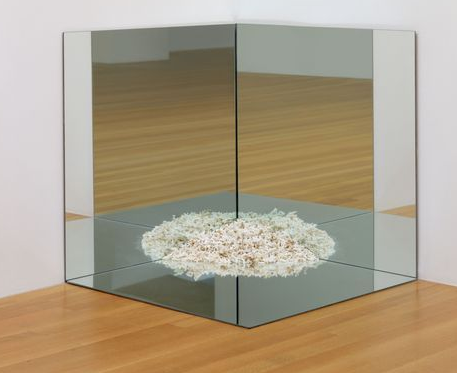
In the 70s, Graham himself would begin making pieces like “Alteration to a Suburban House”: “It proposes replacing the siding of a single-story ‘ranch’ style home with glass; a mirror would bisect the house lengthwise.” And mirrored and semi-mirrored rooms, like 1976’s “Public Space/Two Audiences.” From Parkett, 2003 [PDF]:
A game of prestige, it took advantage of man’s very ingenuous perception of space to double the reference coordinates of a place, using a “simple” mirror-wall and another in transparent glass that intersected a rectangular room. It was like looking through a bottomless mirror, with one’s ego reflected in it; but it was also pervaded by a transparency. Meanwhile other wandering presences could be discerned, though it was impossible to ascertain their exact whereabouts. This work inaugurated a new approach by Graham to time delay: a dizzy perception postponed, an opportunity to observe a stranger, albeit only for an instant, before recognizing the stranger as oneself.
And still later, he’d turn to the two-way mirror, just as our callow, lady-baiting shrink focus-grouper on “Mad Men” does. “Two-way mirror used in office buildings is always totally reflective on the exterior, reflecting the sunlight and transparent for workers inside. Surveillance power is given to the corporate tower,” wrote Graham.
Over the years to come, Sterling Cooper Draper Prices of the world would move from their glass-walled entryways and sunny towers and shared elevators-all the better to meet the fun local lesbians in-to more forbidding and mirrored corporate towers, as corporate power began to be expressed by outward-looking, all-concealing, security-conscious hide-outs. All the better to see you with, my dears.
Natasha Vargas-Cooper is on vacation this week.
Still, you can always find more footnotes right here, or, you know, you can get a whole book of ‘em.
Heroes Of The Hamptons

In some respects, it turns out, the rich aren’t all that different. They contend with many of the same mood swings and overmastering passions that assail the peasant hordes. They gossip about Lindsay Lohan, they wonder in odd moments at the gym just what is the deal with Lady Gaga, and as the old saw has it, they put their riding pants on one leg at a time.
And like any bewildered civilian in the consumer bedlam of the great American market, they crave authenticity. But not in the same way you or I might, of course. Sure, they’re dimly aware from that elegant boardroom comedy of manners, “Mad Men,” that a gargantuan industry somewhere out there erects the scaffolding of our innermost longings to have and to hold. But that’s not the M.O. of the grasping Croesus class, really. They don’t need to let The Expendables or the skinny pants craze wash over them to jumpstart the mad quest for private fulfillment. They need, rather, something far more complex: a tastefully fleeting dollop of leisure that confirms their spot atop all relevant social hierarchies-something that airs an endearing personality quirk or two while never letting them forget for an instant that they are the culture’s rightful and supreme objects of social deference.
This, naturally, is where Vanity Fair comes in. The luxe lifestyle monthly stands expertly athwart this wrenching paradox, as befits a publication named for a Methodist vision of the road to Hell. And now, just as the peak of the season of moneyed leisure arrives, VF scribe Jessica Flint teams with photographer Alix Smith to docent America’s jittery viceroys through the cognitive challenge known as the Hamptons summer.
Once upon a time, it seems, the Hamptons were “an idyllic enclave where Manhattanites decamped to escape the bustle of city life.” Now, however, the place abounds with crass eyesores that can send even a practiced socialite into a whimpering fit of panic worthy of a CW franchise; the place “has become infested with pop-up shops, bass-thumping nightclubs and publicity parties.” But today’s Gatsby-lite generation need not fret: Flint has polled “eight young people who do the East End right to show us their Hamptons habitats,” and supply a refresher course in “the romantic charm of Long Island’s South Fork.”
Why, there’s Amanda Hearst, for starters. The publishing heiress presides year-round over a spread her family built a decade ago after a desultory set of tours through the summer rental markets in Bridgehampton, South Hampton and Water Mill-where the present Hearst compound now hosts a bestiary worthy of Charles Foster Kane. There’s an emu, espied touching down “a little more than a touchdown pass away from the pool,” together with “miniature goats, a donkey, a mini-horse, ducks, chickens, geese, cats, dogs, an African gray parrot and doves.” And if the thought of a “mini-horse” cantering among a gaggle of doves isn’t sufficiently creepy, let’s not forget the house proper, which “incorporates leftover marble mantelpieces [Amanda’s] great-grandfather William Randolph Hearst flew in from Europe to furnish his famous castle in San Simeon, California.” Because really, nothing says summer relaxation like ghoulishly disinterred Old World ruins.
And just a few more touchdown passes down the road in Water Mill there’s the Argentinian polo pro Nic Roldan, who wants one thing understood at the outset about his Hamptons life: “It’s not all work and no play.” True, as the Flint-Smith documentary team arrives, he’s just completed a bruising “practice session at the polo field next door,” but he also unwound for a spell in the pool, presumably in a sage bid to ward off the Hamptons epidemic of polo-related neurasthenia, so now the fetching lad stands in his kitchen “dripping wet.” Of course, as “one of the best polo players on the planet,” Roldan isn’t exclusively a Hamptons habitue; he divides his time, Flint writes, between the South Fork, Argentina and Palm Beach. But he’s migrated north this season to ride with “Team Certified’s Gonzalo Garcia del Rio, Iñaki Laprida, and sponsor Michael Borrico,” while also rolling “with an entourage of groupies.” In other words: dismount, hand your mallets off to the help, and everybody into the pool! All work and no play makes Nic a dull boy.
Of course, if miniature farming and globetrotting tumescence aren’t your thing, there’s always the life of the mind. Consider the testimony of Christina Lewis, a k a “The Writer,” a business scion who’s thoughtfully shouldered the burden of “reporting on the Hamptons for the Wall Street Journal this summer and so is naturally pictured plying her trade in a beachside garret, seated at an antique desk while sporting a strapless ball gown. To nourish her muse, Lewis apparently pops into an awaiting carriage and hies over to East Hampton’s Bookhampton to inspect “the greatest selection of books ever.” (Indeed, the store’s eponymous blog reports that its two bestselling nonfiction titles are Dan Rattiner’s In the Hamptons Too and Carol Saxe’s Paintings of the Hamptons-and lest you hastily conclude that the store’s clientele is a tad solipsistic, just note that No.5 on the list is Sam Wasson’s Breakfast at Tiffany’s meditation Fifth Avenue, Five A.M.. Truly, this is the greatest selection ever.)
The rigors of composition aren’t for everyone, of course. As Flint notes, the far less strenuous path to Hamptons cachet is the calling of professional houseguest. That’s the niche carved out by fashion-designer-cum-”rock aristocrat” Charlotte Ronson, who’s been surfing Hamptons guestrooms since the age of five. Ronson indeed possesses a pedigree right out of the Kato Kaelin Academy; her mom is “a socialite and jewelry designer,” while siblings Marc and Samantha are both D.J.’s. To paraphrase the immortal Eve Arden in “Mildren Pierce,” the Ronson brood was all apparently frightened by the sight of a callus at an early age. But of course, Charlotte Ronson’s lifelong tenure as a Hamptons “invite-able” means that she has assembled a forbidding shopping-and-dining portfolio out among the summer swells: “Babette’s, in East Hampton, for breakfast; Town Line BBQ, in Sagaponack, and Turtle Crossing, in East Hampton, for barbecue; Gosman’s Dock and Cyril’s in Montauk, for seafood; Blue Parrot in East Hampton for cocktails.” Even the tireless Flint grows a bit woozy contemplating the itinerary: “the list goes on (Round Swamp Farm for fresh snacks) and on (Scoop du Jour in East Hampton).” One can almost hear scenemaking Hamptonites in the background, fretting amongst themselves in hectic yet hushed tones to avoid eating out, lest they end up hosting the rock-aristocrat ingenue and her irritating little dog for another goddamn summer.
Meanwhile, Flint tiptoes dangerously close to the full decimation of her slapdash premise with the inclusion of another rockin’ eminence, Montauk surfer dude Rob McKinley. He is, after all, one of the “big city nighclub guys” who in 2008 sprang the Surfer’s Lodge on the unsuspecting end-of-the-island hamlet-and one has to assume a fair amount of dreaded “bass-thumping” occurs within the Lodge’s walls. But like Ronson, he can claim Hamptons authenticity dating back to his wonder years: “I first went to Montauk in the summer as a kid at eight years old.” Still, one has to suspect that a wetsuit dandy now dating veteran MTV awards-and-reality-TV producer Summer Strauch isn’t all that exercised about preserving the region’s chief selling points (in his view, “the natural beauty of the Hamptons and the mix of characters the area attracts”), club impresarios being “characters” in just about the same sense that the MTV video awards are about “talent.”
Such analytical confusion aside, however, Flint does masterfully round up her linked biographical study with a true culture hero of Hamptons privilege: Dylan Lauren, daughter of “fashion icon Ralph and photographer-author Ricky.” She has neatly resolved the authenticity dilemma in a way that only the fabulously well-to-do can: She purchased outright the main object of her childhood Hamptons longing, the East Hampton candy store formerly known as Nuts About Chocolate. The onetime site of that local sweets outlet is now a satellite franchise of the younger Lauren’s infantilizing retail chain Dylan’s Candy Bar, reportedly inspired by her love for Willy Wonka and the Chocolate Factory and the early-childhood boardgame Candyland. In a typical flourish of heiress entitlement, she announces “I insisted on it, even though there were other available spaces in the area.” And what better way to honor the idiosyncratic charms of one’s childhood haunts than to annex them casually to one’s property portfolio as an iconette-on-the-make?
It seems unlikely, to judge by the evidence, that during those same formative years, Dylan Lauren had ever happened upon Jane Addams’ celebrated description of the spiritual distemper that so deeply unsettled her own privileged upbringing: “You do not know what life means when all the difficulties are removed! I am simply smothered and sickened with advantages. It is like eating a sweet dessert first thing in the morning.”
Then again, what would be the point of erecting anything like a settlement house on the Hamptons? It’d be only a matter of time before the facility be overrun with invite-ables and polo groupies and surf club regulars-at which point Vanity Fair would have to dispatch another photo team to patiently sort out the social order all over again. So party on, sweet Dylan-you and yours will always have the Hamptons, a bit of romantic charm nestled right where your conscience should be.
Chris Lehmann sends a handwritten thank you note to his hosts after every stint of houseguesting.
Similarities Between Auschwitz and Downtown Disputed
It is astounding that this even needs to be said: “If Charles Krauthammer and Newt Gingrich think there is any comparison between what happened at Auschwitz and what happened at Ground Zero, then they are Holocaust deniers. Build 400 sets of Twin Towers, force an entire population into them at gunpoint, and then crash 800 airplanes into them-airplane after airplane, loaded with women and children, with the goal of exterminating their entire race-and you might begin to have something like Auschwitz.
Lower Manhattan is not Auschwitz.”
Woman Can't Make New Memories
The story of Michelle Philpots, whose short term memory was destroyed following an accident in 1994, leaving her incapable of remembering much of anything past that year, is strange enough, but news being what it is, it does allow for a variety of cinematic comparisons. Groundhog Day gets a mention, as does 50 First Dates, but there are a couple of other obvious ones that are left off the roster for whatever reason. Anyway, this is an odd one. Poor Matt Lauer; this woman will never remember his name.
Jarhead Uncorked
Good news from the ursine community: A little black bear cub nicknamed “Jarhead” has been liberated from the jar that was stuck on his head since late July. The cub and his family were transported to a less populated part of Ocala National Forest in Florida where there are presumably fewer jars.
Regularly Foul Lady Comedian Offends Sensibilities at Offensive Event
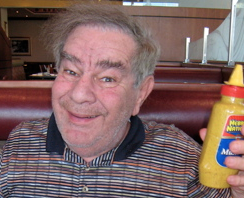
The outrage economy is upset that comedian Lisa Lampanelli told some dirty jokes at the recent Friars Club Roast of David Hasselhoff. Did she go too far? (Spoiler: probably not! Or also: that’s the point?) Time for some very recent history.
2002
Roast of Chevy Chase.
Ms. Lampanelli returned to [Beverly] D’Angelo and her chemistry with [Chevy] Chase in the Vacation pictures. “I haven’t seen chemistry like that since Rosie O’Donnell poked Tom Cruise with her strap-on. In fact, it’s nice to see Rosie O’Donnell,” she said, then added: “Oh, that’s Freddie Roman.”
2005
Roast of Don King.
“I’ve had more black dick in me than the urinal at the Apollo,” Ms. Lampanelli said. [N.B. You want “too far”? This was the roast in which Paul Moody went way dark, one reason being that Donald Trump was on the dais, and it was not ancient history to everyone involved that Trump had taken out ads advocating reinstatement of the death penalty in light of the Central Park jogger attack… in which the convictions were all vacated, and the lawsuits against the City are still ongoing. In any event: sort of tense!]
2006
Roast of Jerry Lewis.
“But you look fantastic, Nathan [Lane],” [Lampanelli] said to him. And then to the crowd: “Up until recently, he had a goatee. He shaved it because it kept irritating Matthew Broderick’s balls.”
